
Two decades later, Resident Evil completes its remake trilogy. Raccoon City comes to life to offer the most intense of escapes.
Interesting as the mythology of the Resident Evil saga is, the truth is that the story behind the scenes is even more fascinating. Capcom's intention to reimagine Sweet Home gave way to a more personal project by Shinji Mikami, who then appointed Hideki Kamiya to direct the sequel. So far, and ignoring that RE2 was restarted in the final stretch of its development, things get complicated. Because after chaining two successes with rising figures, Capcom gave the green light not to one or two, but up to four more installments. This decision was based on the intention to exploit the pull with exclusives for each platform: Sony users would receive the full-fledged Resident Evil 3, again led by Kamiya, while those from Nintendo would enjoy a prequel to the original (Zero ) and Sega's from another unnumbered sequel (Code: Veronica). But what about the fourth game? It turns out that Kamiya soon decided that the ideal would be to move RE3 to PS2 to get a higher qualitative jump – a jump so big that it was missed – so Capcom put into production a spin-off to cover the gap and not leave PSX without his third game.
Developed under the code name "Resident Evil 1.9", this installment would act as a prequel to RE2 without focusing on any of the known characters, but rather a group of mercenaries surviving the first zombie waves on the streets of Raccoon City. Kazuhiro Aoyama, designer in charge of balancing technical aspects of the gameplay in the first two installments, was assigned both a novel team and the task of finishing the title in one year, during which they worked to create an arcade and replayable campaign thanks to More refined action, random events, decision making, and a boss reused in multiple encounters. But in the midst of development, the carambolas of Capcom's intricate multi-sequel strategy altered the plan and Jill Valentine – co-star of the first installment – joined as the main character. A significant, albeit small, change compared to the news that Aoyama would receive months later: the one then internally referred to as RE 1.9 + 2.1 – to include an ellipsis and end after RE2 – would retain the intended subtitles ("Nemesis" or "Last Escape" depending on the region), but would also add 3, thus putting the team in a sprint to justify the decision.
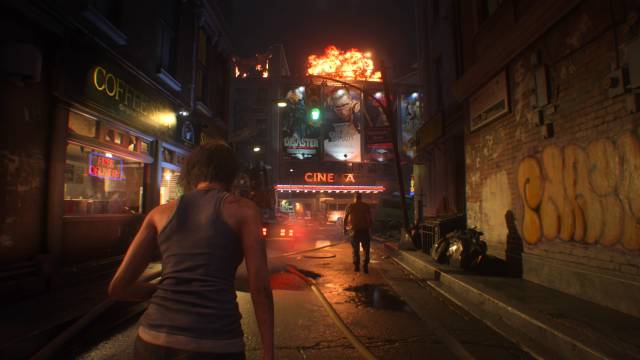
Last escape, new opportunity
This little history lesson, well known to fans of the saga, is a reminder that is linked to the very essence of the original Resident Evil 3 and the possibilities of this remake. Conceived two decades later, with a longer development time, better production values and a clear understanding of the impact that Nemesis – character and game – had on the gamer culture, the new team was presented with an even greater opportunity to reimagine and expand on a legacy basis than in the case of Resident Evil 2 (developed in parallel by another team within Capcom). After playing and replaying it multiple times, we can move forward as this situation has a visible impact on a remake that takes many more freedoms, and that often transforms the escape of Jill Valentine into a completely new adventure. The streets of Raccoon City follow, the mercenary cast follows, the fireproof Nemesis follows. But the deeper we go, the deeper we go into unknown territories that end up establishing the game as a semi-unpublished installment that does not overwrite, but complements the original.
The first and most obvious change comes from the hand of the RE Engine, which since RE7 has not failed to offer a spectacular finish in terms of setting and detail. This, of course, also has an impact on the gameplay, but before delving into it we cannot tiptoe over the excellent work with the narrative and the staging. In a nice twist of fate, the saga that once housed some of the most infamous screenplay and acting work now moves with extreme ease in the field of blockbusters. All the characters have expanded roles, with Jill and Carlos establishing the show in reality thanks to a much more natural and better-developed dynamic, secondaries such as Tyrell giving a more constant reply or the twisted Nicholai stealing each scene in which it appears. Even with a fast pace and a much higher proportion of playing time than sequences, the remake succeeds in shaping personalities and exposing motivations, driving the plot in a more direct and logical way.
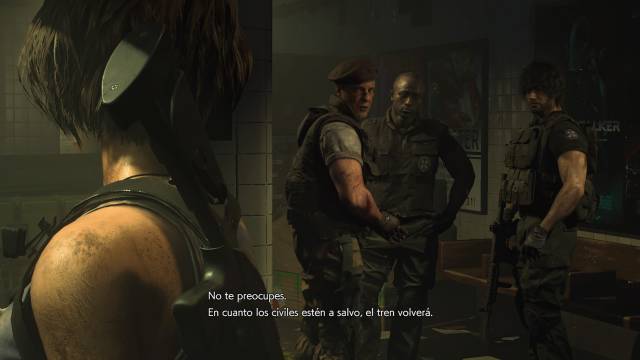
Part of this triumph lies in its relative restraint: RE3 may be a game about monsters and survival in apocalyptic settings, but management doesn't allow you to scale more than you need to or step into the terrain of RE4 and its derivatives. Despite the heightened sense of showmanship and even the occasional return of Quick Time Events, the more humanized behavior of the characters is underpinned by fairly plausible action both on and off the scenes. As Carlos rightly points out shortly after starting, Jill is a "superpolis", not a superhero who makes zombies duplex or pushes big rocks with punches. Sometimes the title dilutes the line between game and sequence to make us participate in scripted events – usually as a transition between two areas -, and although the result is more typical of some of the modern exponents of Naughty Dog than of a Resident Traditional, its effects are manifested more at the design level than in desensitization to the consequences of danger.
Redesigning Raccoon City
Speaking of design, we now turn to one of the cornerstones of any good Survival Horror, a family in which Resident Evil 3 still fits in despite its licenses. As we already discussed in a report published this morning, conceptualizing the levels as small structural knots solved by exploration, backtracking and resource management has been essential in defining and reinventing the genre. In that sense, the remake once again offers its own version of the formula and builds a new bridge between the classic Survival, intricately designed and folds around the rooms with typewriters and trunks, and the greatest action Resident corsetting . For practical purposes, this means that the development of RE3 goes through a series of funnels that keep the game light, with clear objectives, constantly renewed, and frequent changes of locations, but that it is also allowed to dedicate some of these to the type of exploration and planning. upon which the saga was first built.

Inventory management remains capital and, although expandable through fanny packs, it often forces the return to the trunks for items or makes it impossible to take goods on stage. It is not something as taxing as in the first installments, but it continues to have an important weight and determines the way to face each exploratory loop, establishing priorities and anticipating future needs. On the other hand, although the design never reaches the peaks of the police station in RE2 – to be fair, the original RE3 did not either -, in the more complex areas it has multiple rooms where the progress path as such (the steps to follow) may be limited to a specific sequence, but the order of entry to places or collection of optional items adds welcome flexibility. In addition to ammunition and heals, pieces like the mentioned fanny packs or weapon upgrades are often hidden under optional backtracking, safes that require searching for the solution, or other extra tasks like the redesigned Raccoon City jewelry hunt.
That said, accommodating to a hybrid structure that rhythmically alternates between the two design philosophies has a varying impact on classic areas that are still recognizable in one way or another. A good example is found in the initial section, extended to a brief stay in Jill's apartment before the chaos breaks out, but which then leads us directly and in set pieces to the subway. From there the exploration really begins, the design opens up and raises several possibilities to then release Nemesis since we have a clear idea of where everything is and we have to face the last stage of that specific mission –as RE2 did with Mr. X on the way back from the garage. After returning to the subway, another set piece redirects us to the reconversion to a complete area, which was once just a corridor, where the setting is momentarily changed and a new enemy is introduced before returning to the surface to complete the central part of the city. with a boss and another chase – more written – through the streets.
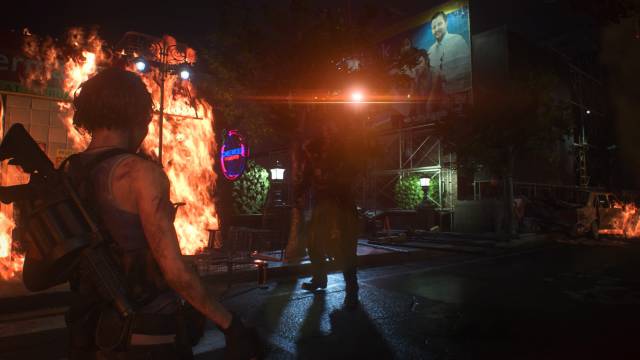
A new game, for better and for worse
This early example illustrates the general operation of a development that then repeats several similar cycles. A decision, as expected, with its positive part and its negative part. On the one hand, the game breaks with the usual trend of starting with the most complex scenario and then facing a succession of more linear levels towards the final climax. Thanks to this structure, RE3 is more unpredictable, and although exploration through the streets does not take advantage of the potential it would have if it were to cover the first half again, later the fireworks give way to more intricate locations than in the original they did not give as much or were not even. Of course this also happens in reverse and some of the most emblematic places have not passed the cut or have been left in simple winks for attentive fans. Raised even more as a reimagination than a remake than RE2, the game seeks and finds its own identity even if it means losing part of that of PSX, which ironically ends up taking it back to a channel more similar to the first two installments than the Original RE3 and its improvised third act.
On the other hand, although as a mainly action game it still maintains a large part of the environmental and mechanical sensitivity of the Survival Horror, much more than Resident Evil 4 or any of the deliveries created in its wake, the cocktail concessions are there and pass certain invoices. The save tapes, for example, even drop in Hardcore mode, which this time also has checkpoints and focuses its changes on combat (tougher enemies, less ammo and healing items). It is a decision that makes sense in more restricted set pieces or sections, but it deflates part of the tension in the open ones because, in addition to removing a management element, the automatic saving alerts of the proximity of certain dangers and puts a mattress that minimizes the impact in case of death. Likewise, and probably prompted by the intention of not stopping the player for too long in the same place, classic logic puzzles – such as the clock tower music box or the water sample in the factory – practically disappear to link progress to the search and use of items such as cards, batteries or fuses.
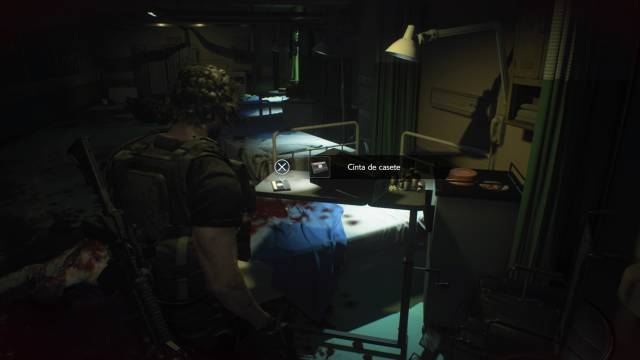
Evolving Combat: Perfect Dodges
Resident Evil 3 is, in short, a lighter and faster version of Resident Evil 2, although by focusing on the shootings we can speak of an evolution. The base, from the operation of the target –with a grid that increases the possibility of critics if we pause and allow it to close on a target– to the detection system –the dismemberments continue, although now the extremities explode so as not to overload due to the increase in Enemies – it's the same as its predecessor, but it makes a key change about it: limiting defensive items such as the knife and grenades to normal weapons to dedicate its button to a new movement called fast step. In combination with analog, this action can be performed at any time and moves Jill one or more consecutive times – if we press it repeatedly – in the desired direction. We can even change direction between the first, second or third step, or execute it immediately from the aiming position without having to lower the weapon before, making it a very versatile tool to avoid dangers.
Furthermore, while its mere existence makes things easier, it also introduces a higher-risk, higher-benefit mechanic, by becoming the equivalent of a parry: if it runs at the right time, just as an enemy launches an attack, Jill rolls out of its range in an action called perfect dodge that offers some frames of invincibility and allows you to chain it with an assisted counterattack that briefly slows down the action. It is a technique that requires some training, since its incorrect use has the opposite effect and throws us into the jaws of our enemies. But far from "breaking" the balance of the game in the long term, it serves to build more technical and satisfying battles without perverting the more methodical spirit of Survival Horror compared to traditional Shooters. Given his speed and jumping ability, Nemesis always finds a way to position himself in our personal space, so technique is essential to keep his distance and flee or damage him enough to get the pieces of weapon he drops when knocking him out. The same applies to his formal boss encounters, inescapable, but rethought and vastly improved since PSX.
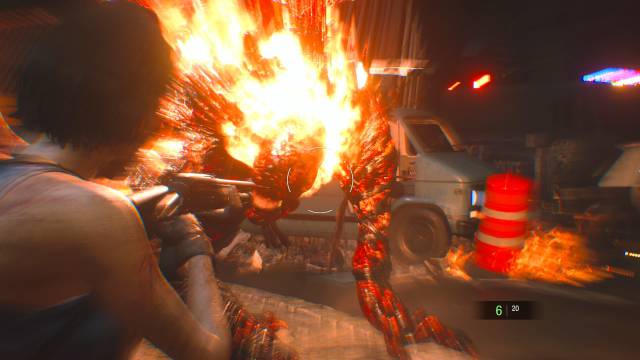
About monsters and weapons
As for common enemies, zombies as an individual unit can end up being somewhat trivialized compared to Resident Evil 2, but the increase in their number adds a new variety, possessed by parasites, which launch tentacles from a considerable distance. These attacks are more difficult to "read" and by extension to dodge, although if we talk about dangers, the palm is taken by the two species of Hunters included (Beta and Gamma): leaving aside their greater speed and resistance, both count with special attacks that can kill instantly, so all caution is little when we are close to them. And it is that as much as the dodges help, resorting to weapons is still vital to survive, particularly against creatures that the pistol barely scratches. In this area, the remake is not particularly creative and draws on classics such as the shotgun, the magnum or the grenade launcher, which now incorporates the mines – old in its own weapon – into the selection of ammunition from which we can rotate. It is a change that purists may not be excited about, but at least it serves to further encourage their use, and the team even designs one of the bouts around them.
Continuing with discards, it is time to talk about the spiders, which again miss the appointment in this rebirth of the RE Engine. The same is true of the omission of the worms – including the big one who was the boss – and, more surprising if possible, the confinement of the Drain Deimos to a very short area near the start. Although the game is not short on enemies, a large percentage return directly from RE2 (including the pale-headed zombies released in the Other Survivors DLC), so each missed occasion gets more noticeable. Going for a quality versus quantity approach is a laudable philosophy, and both the redesign and implementation of both types of Hunter is exemplary again as in the case of the Lickers and the G-Adults in the previous installment. But the introduction and immediate abandonment of some Drain Deimos already adapted to the gameplay of the remake, which could add new possibilities in the encounters and more elements of management through the poison status, leaves a bittersweet taste in spite of the other virtues of the bestiary .
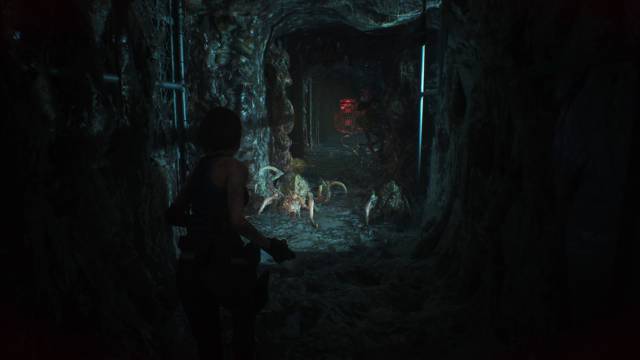
Making merit: Store and post-game modes
A clear method to remedy this resides in the existence of extra modes with alterations in the distribution of objects and enemies. Although at first the game is limited to the three already seen in RE2 (Assisted, Standard and Hardcore), completing the campaign at the highest opens the door to a new one called Nightmare, which in turn also ends up unlocking Hell, where at last control points are eliminated and typewriters are reduced. Each one is more difficult than the last one – softening in the Hardcore process, which we already recommend as a start for veterans in the saga – and, more importantly, they play with the expectations created during the initial modes. Unfortunately, this does not imply the best use of the Drain Deimos (shocking decision that we would like to see corrected at least post-launch), but it does offer other substantial changes such as much greater presence of parasites, literal zombie showers or the displacement of enemies to areas where they were not before. It is a great incentive to replay and incidentally take advantage of the new store, which rethinks and revalues the merit system of RE2.
These consist of achievements associated with both normal progression and much more specific objectives such as overcoming the game without using trunks, killing X number of enemies with each weapon, locating and destroying dolls, obtaining upgrades or completing other optional tasks. Each merit overcome, in addition to unlocking artworks and models of each character or creature, rewards us with a certain number of points that we can then invest in extras such as a new suit (we insist on one, something else to correct), fanny packs, the ammunition tool of the original to get more quantity by combining gunpowder – it is somewhat variable depending on the mode -, early access to the pick to take advantage of before it, a selection of weapons with infinite ammunition and coins that when carrying in our inventory increase defense , attack or add self-regeneration of life – normally only present in Assisted. It's a great idea, and it helps make modes like Nightmare and Hell more affordable, but it also highlights the absence of the Mercenaries mode that supported this class of unlockables in the past.
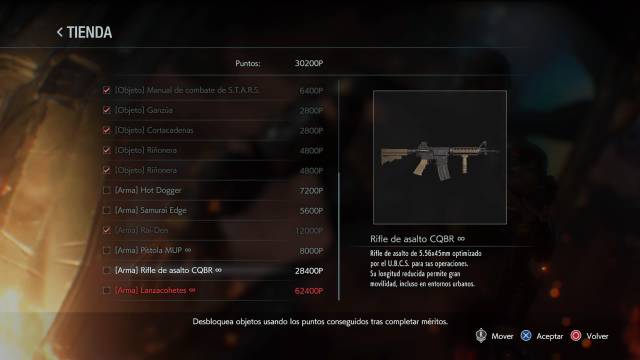
Resistance: Together, but not scrambled
Because fantastic as the campaign can be if we agree with the concessions in favor of rhythm and action, with an approximate duration of 6 hours – less if we rely on the range counter that stops during sequences and breaks – put all the eggs in the basket of difficulties and speedrun is a rather questionable and risky move on the part of Capcom. Without the events with ramifications of the original, the puzzles with random solutions or an extra mode like Resident Evil 2 did with The Fourth Survivor despite already including two campaigns – and a second route for each one -, the legs of his Shelf life is cut ahead of time. This is why the company has decided to include the Resistance spin-off as part of the bundle as well, which in theory increases its value, but also adds its own ration of drawbacks.
As if anyone was unfamiliar with Resistance, available temporarily first during a beta last year and now again days before launch, it consists of an asymmetric online multiplayer for 5 players. This means that four of them play survivors exploring key levels of "Escape Room", where they must collaborate to find three keys or fulfill other objectives and thus move to the next area before time runs out. Meanwhile, the fifth, called the brain, watches them through a camera system and sets traps or sends enemies – which he can also directly manage – to impede their success. It is an interesting concept, the real journey of which we cannot yet evaluate for sure because, like all online games, it is subject to the interest of the community and the work of Capcom polishing it and adding content based on player feedback. Right now? The experience is quite green. The first games are somewhat chaotic due to the number of characters and enemies crowded together in closed spaces, and the lag has also been noticed in our touchdowns. That, of course, when we have found other players in the first place.
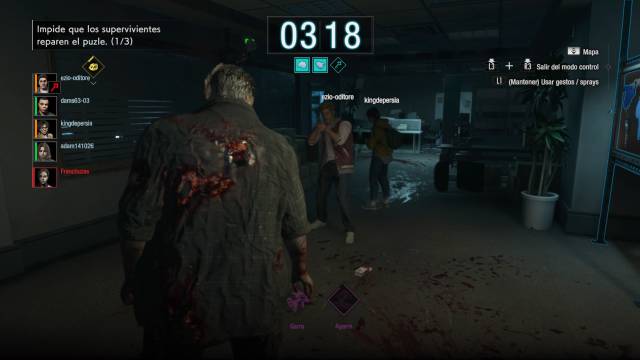
But even ignoring that for its margin for improvement, and also ignoring the always worrying presence of micropayments to get multipliers of the points that we exchange for loot boxes – access to the store was restricted, but it exists – even in the hypothetical case If it ends up working at its full potential, it will not change that it is an independent and totally disassociated experience of Resident Evil 3. Despite sharing the use of the RE Engine and some "assets" of both RE3 and RE2, there is a significant difference in control and design. Resistance does not benefit from Jill's perfect dodges, from Carlos's unstoppable punch – an alternative version of the technique executed when we handled it in the campaign -, from the possibilities that the other mercenaries could offer, or from the synergy between modes that a joint unlockables store. They both have individual installs, but even if Capcom had bundled them together in one app, it wouldn't hide the fact that they're two games glued together with zeal.
The good news, trying to end on a positive note, is that this Capcom generation also has a history of free extensions that invites some optimism. In addition to the aforementioned The Other Survivors for RE2, RE7 also benefited from No Soy un Héroe, which alleviated the shortcomings of the final stretch with an enlarged area and a more traditional boss than that of the campaign. If history repeats itself, RE3 can still become the game it has the potential to be without relegating Resistance to fatten up the number of options and hours. But it is a completely conditional if, it does not change that today we have to value what the starting game offers. And it is a high-level “Action Survival Horror” adventure, the best since the fourth installment – which it surpasses in some respects – but also one with several missed opportunities despite the experience and the stellar base bequeathed by Resident Evil 3 original and for the previous remake respectively.
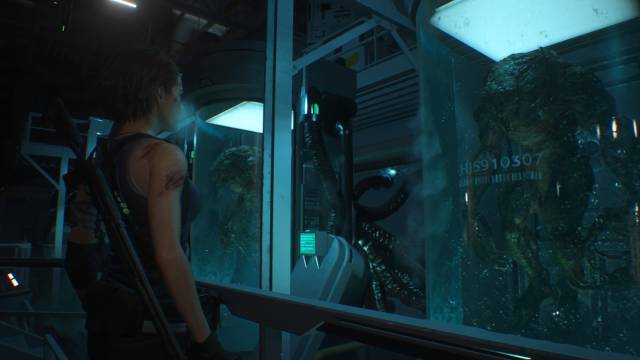
CONCLUSION
Just like in the days of the first PlayStation, the Resident Evil 3 remake reaches the end of the generation to put the finishing touch to a trilogy of great Survival Horror with a very intense climax. The RE Engine once again dazzles with a spectacular staging, its rhythm is hardly comparable in the saga and the increased agility of Jill Valentine allows you to escalate the dangers without falling into the most cartoonish action of the installments of the past generation. However, there are also taras. Although the campaign deftly alternates between noisy set pieces and tense exploration moments, it claims some victims like puzzles, various enemies, development-altering decisions, or several of the game's most recognizable locations from which it draws inspiration. It's a significant departure, more than last year's remake, and is sure to generate disparate fan opinions even though the result is solid from start to finish. Not so much the postgame, which encourages the replayability of its campaign with changes in the highest difficulties and an extras store, but denies traditional modes such as Mercenaries or the Fourth Survivor. In its place we receive Resistance, a spin-off totally disconnected from experience, of rather dubious value at this point, and that more than supplementing, brings salt to the wound of those absences. As a new occasion to relive the last hours of Jill in Raccoon City, it meets the note, but as a direct continuation of Resident Evil 2 we expected something more from the current Capcom.
THE BEST
- The speed and intensity of the campaign. Hardly breathes.
- Brilliant staging. Audiovisual feast with good performances.
- The effective reinvention of the action through the perfect dodges.
- Some glimpses of Survival Horror still make their mark despite the change in pace.
- Extra merits and difficulties incentivize replayability.
WORST
- Certain concessions derived from an emphasis on action. More scripts, less puzzles.
- Fans of the original will miss enemies and locations.
- The brief campaign shows the lack of ways. Resistance does not take advantage of or enrich the RE3 core.
Very good
Game with a remarkable finish that we will enjoy and remember. A good purchase, highly recommended for lovers of the genre. It is well cared for at all levels.
